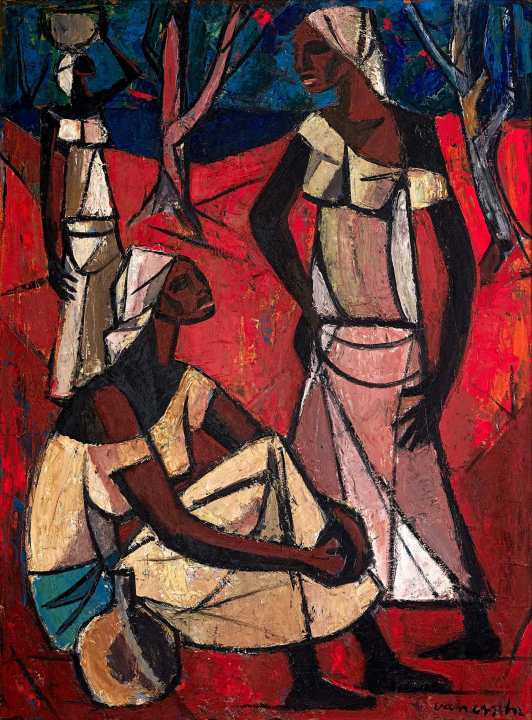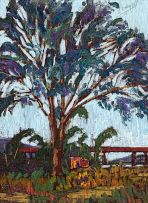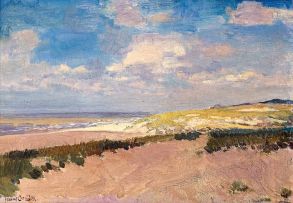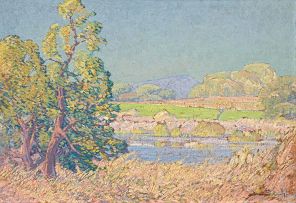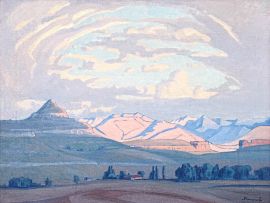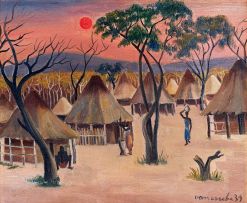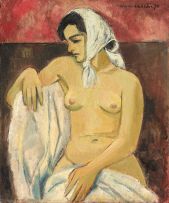Congolese Figures
Maurice van Essche
Incl. Buyer's Premium & VAT
About this Item
signed
Notes
A grant from the Belgian Government allowed Maurice van Essche to mount a painting expedition to the Congo in 1939, where he was immediately intrigued, evidently, like Gauguin had been in Tahiti, and Matisse in Morocco, by the exoticism and unfamiliarity of his surroundings. Unable to return to his native Belgium due to Nazi occupation, Van Essche travelled to the Cape with his family, where he continued to explore an aesthetic that relied on bold colour contrasts, a deliberate indifference to the laws of perspective, and a sophisticated simplification of the human figure into clear, elegantly arranged geometric fragments.
Van Essche's scenes of village life set amongst sharply-shadowed and leafless trees might remain instantly recognisable to a South African eye, as do his lines of soft-shouldered women walking, frieze-like, across burnt-orange earth, but his style, more than anything else, evolved from his early exposure to European Modernism. It is impossible to look at a work like Congolese Figures, for instance, without Picasso's Les Demoiselles d'Avignon coming to mind. Both reduce figures to interlocked planes or shards of colour, identify them by their African mask-like features, and convey a sense of vitality. Despite the similarities, however, Van Essche's work is the less intimidating of the two: his women appear gentler and more content, while their skin, one might imagine, would be warmer to the touch.
Considering his brief apprenticeships under Matisse in Cagnes and Paris, as well as his early experience in a stained glass studio in Brussels, it comes as little surprise that Van Essche developed a Fauvist palette, and that he applied it within distinct, dark outlines. Both influences are evident in Congolese Figures. The high-keyed red he chooses for the landscape is impossibly bright, and made more so against the deep blues, purples and greens of the horizon. The black outlines of limbs and folds that give the composition its firm structure, moreover, might bring to mind the lead piping required to arrange and fix panes of stained glass.
Although Van Essche borrowed freely from Modernist styles, his works maintain a distinctive, tranquil and very personal tone. This quality was summed up by Van Essche's biographer, Carl Büchner, fellow artist and colleague at the Michaelis School of Fine Art in Cape Town during the 1960s, who noted that Van Essche's "preoccupation with solitude, with mysterious planes and vertiginous voids, has brought a strange serenity to his paintings. Yet, from beyond their seclusion they continue to communicate their human message".1
Carl Büchner (1967). Van Essche (Monograph), Tafelberg: Cape Town. Unpaginated.
Literature
Borman, J. and Siebrits, W. (1991) Aspects of South African Art 1903-1999, Johannesburg: Johans Borman and Warren Siebrits. Catalogue number 17.
